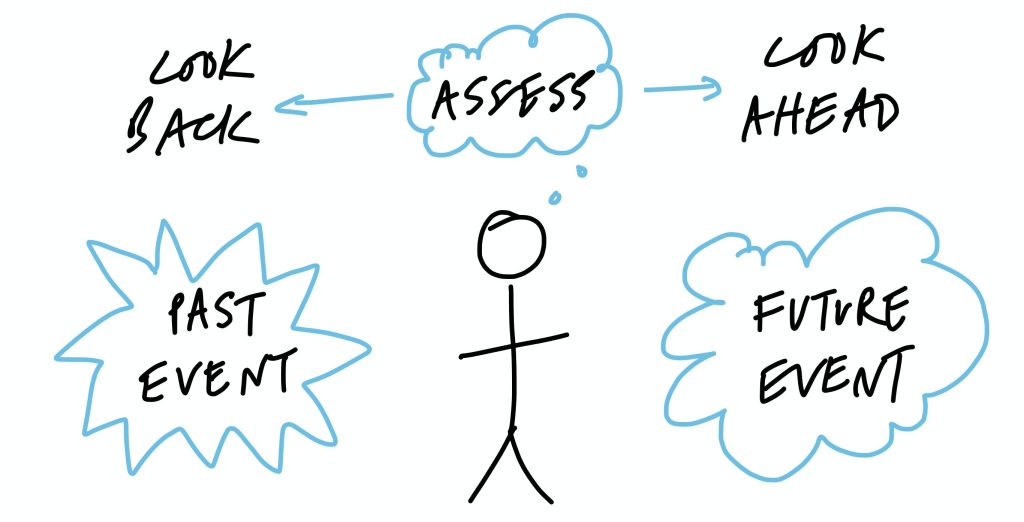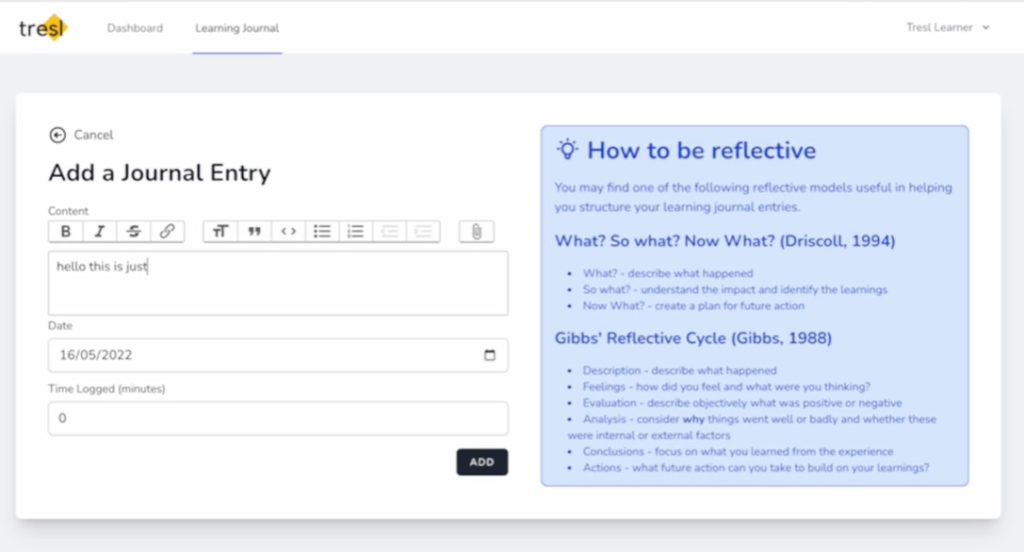What is reflective writing and how can it empower learners?
Recently, a Meta Learning reader asked:
“What is reflective writing?“
It came out of our conversation as to why we included this section in the MySnapshot self-assessment.
As well as inviting learners to score themselves, we invite them to share their reflections on why they gave that score.
This feedback from a learner is one that makes us smile widely each time we hear it. It highlights how knowing what to focus on makes a huge difference – in this case to this man’s career:
“It has really made me reflect on what I find challenging and consider what I need to work on to help me land well in my new role.“
Encouraging self-reflection and creating a safe space for it in your online course, community, mastermind, coaching or consulting practice will enable your learners to navigate their learning and progress.

So, what is reflective writing?
Reflective writing is the process of putting into writing your reflective thinking.
Although reflective thinking is a key part of the process – reflective writing takes reflective thinking to a different level.
By writing down your thoughts you articulate them outside of your own mind, onto physical or digital paper.
Reflective writing becomes a forcing function for greater clarity in your reflection process.
So, what is the reflection process?
When we first start to reflect and write down our thoughts, we often think that it’s about:
- Looking back at an event.
- Thinking about what we’ve learned from the experience.
What we don’t realise is that it is equally about:
- Thinking about how the lessons we’ve learned can be applied.
- Looking ahead.
Reflective writing is a 3 stage process

1. Look back
- What happened? Why did you do it that way?
- What did you learn?
- How does it make you feel? Do you feel confident about it?
2. Assess
- What is your progress? Were you effective?
- What can you celebrate?
3. Look ahead
- Are there adjustments in your approach you want to make?
If we imagine an experience as a wet cloth, the purpose of reflection is to:
- Wring every last drop of learning out of that experience.
- Figure out how you can put your learning into action.
Nobody is saying this is easy.
You may feel like you’re really struggling uphill.
However, when it becomes a regular activity, it can feel normal and relatively easy.

Imagine you give a presentation you’ve spent a lot of time preparing for and you’re really happy with the way you delivered it and how it was received.
But, someone at the end asks you an awkward question you hadn’t prepared for.
You might feel a bit flustered and not answer it how you would have liked.
When you reflect on this, you may:
- Write about how you did not like that feeling.
- Realise that despite being unprepared, you did manage to give an answer of sorts.
- Realise you can think on your feet and have the confidence to do the same in other situations.
- Think more about possible questions and responses for future presentations.
When you realise that you can analyse things and work out possible ways forward for yourself – your self-confidence gets a boost.
When you invite self-reflection in your learning experience, even if you come across some resistance from those new to it, or those who don’t create the space for it – whether your learners choose to take you up on your invitation or not, you are inviting the space for it.
Those who do take up your invitation will be grateful for the opportunity to discover their learning within themselves and the rewarding and empowering experience reflection brings.

Enabling instructors to turn their education into learning and learners to navigate, reflect, and own their learning with the MySnapshot method and self-assessment tool



